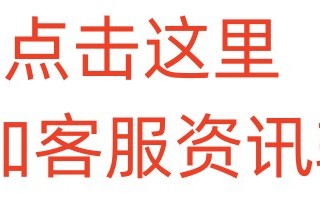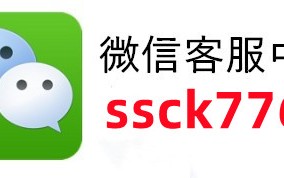网上有关“there are some water改为否定句”话题很是火热,小编也是针对there are some water改为否定句寻找了一些与之相关的一些信息进行分析,如果能碰巧解决你现在面临的问题,希望能够帮助到您。
(1)将肯定句改为否定句时,除要正确使用谓语动词的否定形式外,还要将句中的some改为any,将something改为anything等.例如:
(例1.)There is some rice in the bowl.→
There isn’t any rice in the bowl.
(例2.)They bought something in the supermarket.→
They didn’t buy anything in the supermarket.
(2)将陈述句改为一般疑问句时,要根据陈述句中的谓语动词及其时态形式确定其疑问式,同时还要注意将原句中的some改为any,将something改为anything等.
例如:
(例1.)I’ve got some money with me.→
Have you got any money with you?
(例2.)Mr.Wang said something about the accident at themeeting.→
Did Mr.Wang say anything about the accident at the meeting?
(3)将陈述句改为反意疑问句时,除了遵循陈述部分若为肯定式,疑问部分则用否定式和陈述部分若为否定式,疑问部分则用肯定式的原则外,还要注意:当陈述部分含有little,few,no,nothing,never等否定意义的词时,疑问部分要用肯定形式.另外,还要注意部分情态动词的特殊情况,如当陈述部分为must be,表示对现在情况的推测,作“一定”或“肯定”
讲时,疑问部分的动词一般用be的相应否定形式,而不用mustn’t.例如:
(例1.)Tom likes reading,doesn’t he?
There weren’t any mice in the room,were there?
(例2.)There is little water in the cup,is there?
They must be in the reading-room,aren’t they?
(4)对划线部分提问时,可按一定、二移(或加)、三变化、四删除的步骤进行.第一步“定”,就是根据划线部分的内容确定适当的疑问词.如问时间用when或what time,问地点用where,问价钱用howmuch,问年龄用how old,问原因用why,问“做什么事”用what…do/does/did等.第二步“移(或加)”,就是将句子结构改为一般疑问句的形式,如果谓语部分含有系动词be,助动词be,will,have或情态动词时,则将这类动词移到句首.如果谓语动词是行为动词,则需在主语前加助动词do,does或did.但是,如果划线部分是原句的主语或主语部分的定语,则不需要这一步.第三步“变化”,即对句子中某些词作相应的变化,除了将谓语动词变为原形动词外,还要注意将原句中句首单词(专有名词除外)的首字母改为小写,将句中的some变为any,将句号变为问号等.第四步“删除”,就是去掉被疑问词替换的划线部分的词.例如:
(例1.)My uncle has been to Hong Kong twice.→
How many times has your uncle been to Hong Kong?
(例2.)It took the artist half an hour to draw thebeautifulhorse.→
How long did it take the artist to draw the beautifulhorse?
(例3.)Her mother is a nurse.→
What is her mother?
(例4.)The children are playing football on the playground.→
Where are the boys playing football?
(例5.)He read some newspapers in the reading room.→
What did he do in the reading-room?
(5)将陈述句变为感叹句时,首先要确定是用what还是用how开头.如果强调部分的中心词是名词,就用what;若是形容词或副词,则用how.然后将所强调的部分移至what或how之后,要注意去掉修饰这一形容词或副词的副词.例如:
(例1.)He is a very good teacher.→
What a good teacher he is!
(例2.)They danced quite well.→
How well they danced!
(6)将简单句变为复合句或将复合句变为并列句或简单句时,既要注意句子的结构变化,又要注意不能改变句子的意思.要重视一些常用连词和动词的非谓语形式的用法.
例如:
(例1.)We think it true.→
We think that it is true.
(例2.)If you use your head,you’ll find a way.→
Use you head,then you’ll find a way.
(例3.)He was so angry that he couldn’t say a word.→
He was too angry to say a word.
(7)将主动语态变为被动语态时,谓语动词变为be+过去分词”形式,这里的be除了要与原句在时态上保持一致外,还要与句子的主语在人称和数等方面保持一致.
例如:
(例1.)They have set up a new primary school in myhometown.→
A new primary school has been set up in myhometown.
(8)将直接引语改为间接引语时,除了要对人称代词、动词时态、时间状语和地点状语等作相应的变化外,有时还要更改相应的谓语动词或将谓语动词改为非谓语形式.例如:
(例1.)The teacher said,“Will you e here next Sunday?”→
The teacher asked me whether I would go there thenext Sunday.
(例2.)The woman said to the boy,“Go away.”→
The woman ordered the boy to go away.
(9)在作同义词语的转换时,首先要理解原句的意思,然后根据原句的意思和要补全句子的结构填入所缺少的词,使两句意思相同或相近.
例如:
(例1.)My father drives to work every day.→
My father goes to work by car every day.
(例2.)May I borrow your bike,please?→
Can you lend me your bike,please?
there be 和have的区别
some和any后既可加可数名词,也可加不可数名词,some一般用于肯定句,any一般用于否定句和疑问句中。
如:there
is
some
water
in
the
bottle.
some
boys
are
playing
basketball.
there
isn't any
water
in
the
bottle.
are
there
any students
in
the
clasroom?
一、There
be句型
1.表示:在某地有某物或某人。
2.在there
be
句型中,主语是单数或不可数名词,be
动词用is
;主语是复数,be
动词用are
;如有几件物品,be
动词根据最近be动词的那个名词决定。
There
is
a
book
on
the
desk.
There
is
some
water
in
the
glass.
There
are
three
men
under
the
tree
.
There
is
a
bag,two
books
and
three
pens
on
the
desk.
3.there
be句型的否定句在be
动词后加not
,
一般疑问句把be动词调到句首。
There
is
a
duck
in
the
river.
否定句:There
is
not
a
duck
in
the
river.
一般疑问句:Is
there
a
duck
in
the
river?
4.some
和any
在there
be
句型中的运用:some
用于肯定句,
any
用于否定句或疑问句。
5.and
和or
在there
be句型中的运用:and
用于肯定句,
or
用于否定句或疑问句。
6.针对数量提问的特殊疑问句的基本结构是:
How
many
+
名词复数
+
are
there
+
介词短语?
How
much
+
不可数名词
+
is
there
+
介词短语?
7.针对主语提问的特殊疑问句的基本结构是:
What’s
+
介词短语?
二、have
1.表示:某人或某物“拥有”什么东西,强调“所属关系”,而且某人某物作为句子的主语。
2.have用在人称I,we,you,they和复数的人或物后面。
I
have
a
daughter.
三、There
be句型与have有时也可以通用。
如:The
classroom
has
ten
desks.
=
There
are
ten
desks
in
the
classroom.
教室里有十张桌子。
注意:
1.“have
+
表示一日三餐的名词”,意为“用餐”。如:have
breakfast吃早餐,have
lunch吃午饭,have
supper吃晚饭。
2.“have
+
表示食品、饮料等名词”,意为“吃;喝”。如:have
(some)
bread吃面包,have
eggs
(for
breakfast)
(早餐)吃鸡蛋,have
(a
cup
of)
tea
喝(一杯)茶。
3.“have
+
表示动作的名词”,没有固定的意思,常与表示动作的名词同义。如:
have
a
rest
休息一下
have
a
swim
游泳
have
a
drink
(of...)喝一点(……)
have
a
look
(at
...)(朝……)看一眼
4.“have
+
表示某种活动的名词”,意为“进行,举行”。如:
have
a
class
(学生)
上课
have
a
birthday
party
举行生日聚会
关于“there are some water改为否定句”这个话题的介绍,今天小编就给大家分享完了,如果对你有所帮助请保持对本站的关注!
本文来自作者[静枫]投稿,不代表巨商报立场,如若转载,请注明出处:https://91zxpc.com/zx/1387.html




评论列表(3条)
我是巨商报的签约作者“静枫”
本文概览:网上有关“there are some water改为否定句”话题很是火热,小编也是针对there are some water改为否定句寻找了一些与之相关的一些信息进行分析,...
文章不错《there are some water改为否定句》内容很有帮助